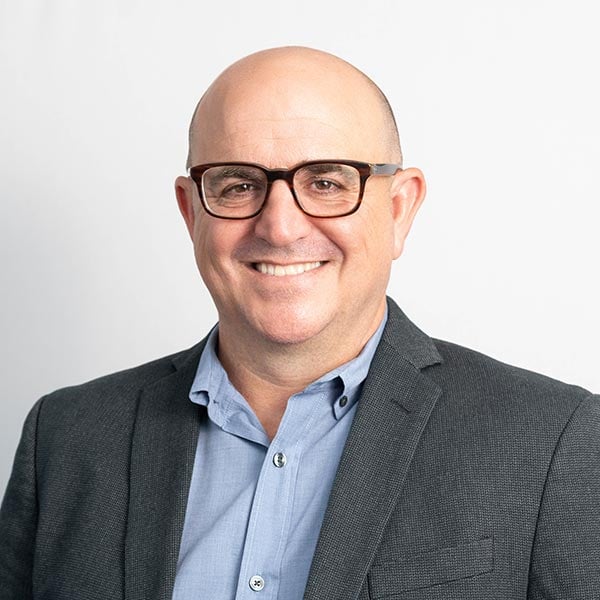The misuse of prescription opioids, including Oxycontin, has reached alarming levels, leading to a widespread public health crisis. Breaking free from the grip of Oxycontin addiction is a formidable challenge. However, hope lies in a comprehensive approach encompassing detoxification, treatment, and rehabilitation.
Detoxification is the initial step in Oxycontin addiction recovery, ensuring the safe removal of the drug from the body while managing withdrawal symptoms under medical supervision. Treatment follows detoxification, addressing the underlying causes of addiction through evidence-based therapies like cognitive-behavioral therapy (CBT) and individual and group counseling. Medication-assisted treatment (MAT) may also be employed to reduce cravings and the risk of relapse.
In the final phase of Oxycontin addiction recovery, rehabilitation is vital, providing ongoing support and therapy in a structured environment. Rehab programs focus on holistic well-being and may include vocational training and aftercare planning to equip individuals with the necessary tools for a drug-free life post-rehab. By seeking professional help and embracing a personalized treatment plan, individuals can find hope and renewed purpose in overcoming Oxycontin addiction.
If you or someone you love has a substance use disorder, Guardian Recovery is available to help. We are dedicated to providing the most comprehensive and individualized medically monitored detox program. To learn more about our programs, contact us today.
Start Healing Today!
Choose recovery and take control of your life, it’s the path to a brighter future filled with health, happiness, and fulfillment.
Oxycontin Addiction Detox, Treatment, & Rehab Programs
The most effective treatment approach for Oxycontin addiction typically involves a combination of strategies tailored to the individual’s specific needs. It’s important to note that what works for one person may not work for another, so treatment plans should be personalized and flexible. Here are some key components often included in an effective treatment approach:
Medical Detoxification – The first step in treating Oxycontin addiction is often medical detoxification. This process involves safely managing withdrawal symptoms while the drug is eliminated. Medical supervision and, in some cases, medication assistance can help ease withdrawal discomfort and ensure a safer detox process.
Behavioral Therapies – Evidence-based behavioral therapies are crucial for addressing the psychological aspects of addiction. For example, cognitive-behavioral therapy (CBT) helps individuals identify and change negative thought patterns and behaviors associated with drug use. Other effective therapies include motivational interviewing, contingency management, and dialectical behavior therapy (DBT).
Medication-Assisted Treatment (MAT) – MAT combines medications with counseling and behavioral therapies to address Oxycontin addiction. Medications like methadone, buprenorphine, or naltrexone may be prescribed to help manage cravings, reduce withdrawal symptoms, and prevent relapse. MAT effectively improves treatment outcomes and reduces the risk of opioid overdose.
Individual and Group Counseling – Individual counseling provides a supportive and confidential environment for individuals to explore underlying issues contributing to their addiction, develop coping skills, and set goals for recovery. Group counseling allows individuals to connect with peers who understand their experiences, share insights, and provide mutual support during the recovery.
Supportive Services and Aftercare – Comprehensive treatment approaches often include supportive services and aftercare planning. This may involve assistance with vocational training, housing, educational support, and establishing a strong support network. Aftercare programs like outpatient counseling and support groups are essential for ongoing support and relapse prevention.
Developing Addiction to Prescription Oxycontin
Oxycontin addiction has been a significant concern in recent years. Here are a few key
statistics related to Oxycontin addiction:
Oxycontin is part of the larger opioid crisis affecting various countries, particularly the United States. In the U.S., it is estimated that over 2 million people struggled with opioid addiction in 2019, including prescription and illicit opioids.
Prescription opioid misuse, including drugs like Oxycontin, has contributed to the opioid crisis. According to the National Survey on Drug Use and Health (NSDUH), in 2019, about 9.7 million Americans aged 12 or older reported misusing prescription pain relievers in the past year.
Opioid overdoses, including those involving Oxycontin, have led to many fatalities. In the U.S., opioid-involved overdose deaths peaked at approximately 50,000 in 2019, with prescription opioids being involved in a significant portion of these cases.
Oxycontin addiction can also contribute to the transition to heroin use. Research suggests that individuals addicted to prescription opioids, including Oxycontin, may turn to heroin as a cheaper and more accessible alternative.
How Is Oxycontin Misused?
Oxycontin is commonly misused in various ways that deviate from its prescribed use. Some individuals take higher doses than prescribed, seeking a more intense euphoric effect. Crushing or snorting Oxycontin tablets, designed for extended release, is another method of misuse that delivers a higher concentration of the drug into the bloodstream. Injection of Oxycontin, after dissolving crushed tablets in liquid, is also practiced to achieve an immediate and intense high. Combining Oxycontin with other substances, such as alcohol or benzodiazepines, is commonly used to enhance its effects. Additionally, obtaining Oxycontin without a legitimate prescription, either through illicit sources or by falsifying prescriptions, is illegal and poses significant health risks.
How Long Does it Take for Oxycontin Addiction to Develop?
The development of Oxycontin addiction can vary from person to person and depends on several factors. There isn’t a specific timeline that applies to everyone, as individual experiences with addiction can differ. However, addiction to Oxycontin can occur relatively quickly, especially with misuse or prolonged use of the drug.
Some individuals may develop signs of addiction after using Oxycontin for a few weeks or months, while others may take longer. The frequency, dosage, and duration of Oxycontin use play a role in the development of addiction. Misusing the drug, such as taking higher doses than prescribed or using it in non-medical ways (crushing, snorting, or injecting), can increase the risk of addiction and accelerate the process.
Complimentary Insurance Check
Find Out Today!
"*" indicates required fields
Signs & Symptoms of Physical & Mental Dependence on Oxycontin
Physical and mental dependence on Oxycontin can manifest through various signs and symptoms. Recognizing these indicators is important as they can be early warning signs of addiction and may warrant prompt intervention. Here are some common signs and symptoms associated with physical and mental dependence on Oxycontin:
Physical Dependence:
- Withdrawal Symptoms – When attempting to reduce or stop Oxycontin use, individuals may experience withdrawal symptoms such as nausea, vomiting, diarrhea, muscle aches, sweating, insomnia, and agitation.
- Tolerance – Over time, individuals may develop tolerance, requiring higher doses of Oxycontin to achieve the desired effects. Increasing the dosage without medical guidance can be a sign of physical dependence.
- Continued Use Despite Negative Consequences – Individuals may continue using Oxycontin despite experiencing adverse physical effects, such as respiratory problems, constipation, dizziness, or slowed heart rate.
Mental or Psychological Dependence:
- Cravings – Strong and persistent cravings for Oxycontin and an intense desire to use the drug can indicate psychological dependence.
- Preoccupation with Obtaining and Using Oxycontin – Spending significant time and energy thinking about OxyContin, planning its use, and finding ways to obtain it may indicate a mental dependence.
- Loss of Control – Feeling unable to control or stop Oxycontin use, even when aware of the negative consequences on one’s health, relationships, work, or financial stability.
- Neglecting Responsibilities and Activities – Prioritizing Oxycontin use over important obligations, such as work, school, or family responsibilities, can signify psychological dependence.
Oxycontin Addiction Detox & Rehab Process
Oxycontin addiction detox and rehab involve several stages to address addiction’s physical and psychological aspects. It typically begins with an assessment and evaluation to determine the severity of the addiction and identify any co-occurring conditions.
The next step is medical detoxification, where individuals discontinue Oxycontin under medical supervision. Medications may be used to manage withdrawal symptoms and ensure a safe detox process. Following detoxification, individuals may enter either an inpatient or outpatient rehabilitation program. Inpatient programs provide 24/7 care and a structured environment, while outpatient programs offer flexibility for individuals to attend treatment sessions while living at home.
Both inpatient and outpatient programs incorporate evidence-based behavioral therapies to address the psychological aspects of addiction. These therapies, such as cognitive-behavioral therapy (CBT) and individual counseling, help individuals identify and change harmful thoughts, behaviors, and triggers associated with Oxycontin addiction. Medication-assisted treatment (MAT), including methadone or buprenorphine, can also manage cravings, reduce withdrawal symptoms, and prevent relapse.
After completing a formal rehab program, individuals are encouraged to engage in aftercare services and relapse prevention strategies. This may involve ongoing counseling, participation in support groups, and access to community resources that help individuals maintain their sobriety and prevent relapse.
Can You Detox From Oxycontin Abuse on Your Own?
Detoxing from Oxycontin abuse alone is not recommended due to the potential risks and challenges involved. Oxycontin is a powerful opioid drug, and sudden cessation or reduction of its use can lead to severe withdrawal symptoms and complications. Professional medical supervision during detox is essential to ensure safety and increase the likelihood of a successful outcome.
Medical detoxification, typically conducted under the care of healthcare professionals or addiction specialists, provides a structured and supportive environment for individuals to withdraw from Oxycontin safely. Medications may be administered to manage withdrawal symptoms, prevent complications, and improve comfort during detox.
Additionally, detoxing from Oxycontin abuse without professional help may lack the necessary support and resources for addressing the underlying factors contributing to addiction. Addiction is a complex condition that involves physical, psychological, and social aspects. Professional treatment programs provide comprehensive care, including therapy, counseling, and support services, to address these factors and promote long-term recovery.
Medical Detoxification for Oxycontin Misuse
Medical detoxification is a crucial component of the treatment process for Oxycontin misuse. It involves supervised withdrawal from the drug under the care of medical professionals to ensure safety, manage withdrawal symptoms, and increase the likelihood of successful detoxification.
Healthcare professionals closely monitor the individual’s physical and mental health during medical detoxification for Oxycontin misuse. They may administer medications to alleviate withdrawal symptoms and minimize discomfort. These medications can help stabilize the individual’s condition, manage cravings, and prevent severe complications.
The duration of Oxycontin detoxification can vary depending on several factors, including the severity of misuse, the individual’s overall health, and the specific treatment plan. Detoxification is typically the first step in the recovery process. It is followed by further treatment, such as behavioral therapies and counseling, to address addiction’s psychological and behavioral aspects.
Withdrawal Symptom Duration
The duration of withdrawal symptoms during Oxycontin detoxification varies, typically lasting around one to two weeks. However, some individuals may experience lingering symptoms for a longer period. Symptoms can include physical discomforts such as muscle aches, sweating, nausea, insomnia, and psychological symptoms like anxiety, irritability, and cravings. Post-acute withdrawal symptoms (PAWS) can persist for weeks or months, including mood swings, fatigue, and difficulties with concentration and memory. Seeking medical support and professional guidance during detox is important to ensure safety and receive appropriate care. Ongoing treatment and support following detox can help manage lingering symptoms and support long-term recovery.
Oxycontin Withdrawal Timeline
Oxycontin withdrawal typically follows a general timeline:
- Early Stage (within hours after the last dose) – Symptoms may begin, including anxiety, restlessness, muscle aches, sweating, and insomnia.
- Peak Stage (1-3 days) – Withdrawal symptoms peak during this time. Symptoms can include nausea, vomiting, diarrhea, abdominal cramps, dilated pupils, rapid heartbeat, high blood pressure, and intense cravings for Oxycontin.
- Subsiding Stage (5-7 days) – Withdrawal symptoms gradually subside, although individuals may still experience fatigue, irritability, anxiety, and difficulty sleeping.
- Post-Acute Stage (weeks to months) – Some individuals may experience post-acute withdrawal symptoms (PAWS), which can persist for weeks or months. These symptoms can include mood swings, cravings, depression, anxiety, and cognitive difficulties.
How Long Does it Take to Detox from Oxycontin?
The duration of Oxycontin detoxification can vary depending on several factors, including the individual’s level of Oxycontin use, overall health, metabolism, and the specific detox protocol. The acute detoxification phase for Oxycontin typically lasts around 5 to 7 days.
During this time, the body works to eliminate Oxycontin and its byproducts. Withdrawal symptoms may be most intense during the first few days and gradually subside afterward. However, it’s important to note that while the acute detoxification phase may be completed within a week, the recovery process extends beyond detoxification.
Our Locations
Our Facilities & Teams Transform Lives
Changing lives by providing comprehensive support and rehabilitation, empowering individuals to overcome addiction and regain control of their health and well-being.
Contact Us to Learn More
At Guardian Recovery, we remain dedicated to providing our clients with a comprehensive program of medical detox that focuses on much more than physical stabilization. In addition to emphasizing physical recovery, we tackle mental, emotional, and spiritual well-being. While prioritizing a safe and pain-free cocaine withdrawal, we offer individual, group, and family therapy sessions, case management services, relapse prevention training, and aftercare planning.
Contact us today if you or your loved one is ready to begin an entirely new way of life and commit to long-term recovery. As soon as you call, we start developing a plan of action that begins with an initial pre-assessment. This assessment helps us determine the most appropriate level of care for each unique case. We identify potential coverage options if our medically monitored detox program is a good fit. We work closely with most major regional and national insurance providers. Contact us today for a free, no-obligation insurance benefit check.
SELF-ASSESSMENT:
Do I have an Addiction issue?
Disclaimer: Does not guarantee specific treatment outcomes, as individual results may vary. Our services are not a substitute for professional medical advice or diagnosis; please consult a qualified healthcare provider for such matters.
- https://www.ncbi.nlm.nih.gov/books/NBK553166/
- https://www.samhsa.gov/data/sites/default/files/reports/rpt29393/2019NSDUHFFRPDFWHTML/2019NSDUHFFR090120.htm
- https://www.ncbi.nlm.nih.gov/books/NBK458653/
- https://www.justice.gov/archive/ndic/pubs/651/abuse.htm#:~:text=OxyContin%20is%20designed%20to%20be,water%20and%20the%20solution%20injected.
- https://www.mayoclinic.org/diseases-conditions/prescription-drug-abuse/in-depth/how-opioid-addiction-occurs/art-20360372
- https://www.justice.gov/archive/ndic/pubs6/6025/6025p.pdf
- https://www.tandfonline.com/doi/abs/10.1080/15504263.2011.620425
- https://www.ncbi.nlm.nih.gov/pmc/articles/PMC4107861/
- https://medlineplus.gov/ency/article/000949.htm









